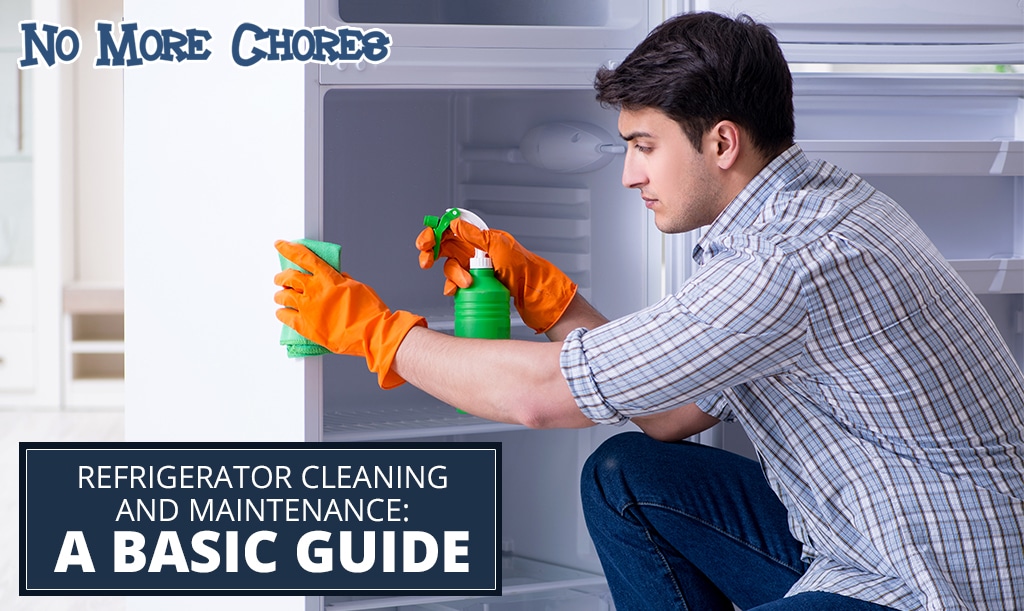Explore the comprehensive guide on how to clean a fridge and keep it in pristine condition. Learn the critical significance of a clean fridge, not only for your well-being but also for energy efficiency and savings. From deep cleaning techniques using mild dish soap, a few drops in a spray bottle, to effectively tackling stubborn food residue, and caring for refrigerator coils, you’ll unlock the secrets to maintaining a spotless and efficient appliance that truly deserves its title as a kitchen hero. So, grab your paper towels and reach room temperature to embark on this refrigeration adventure.
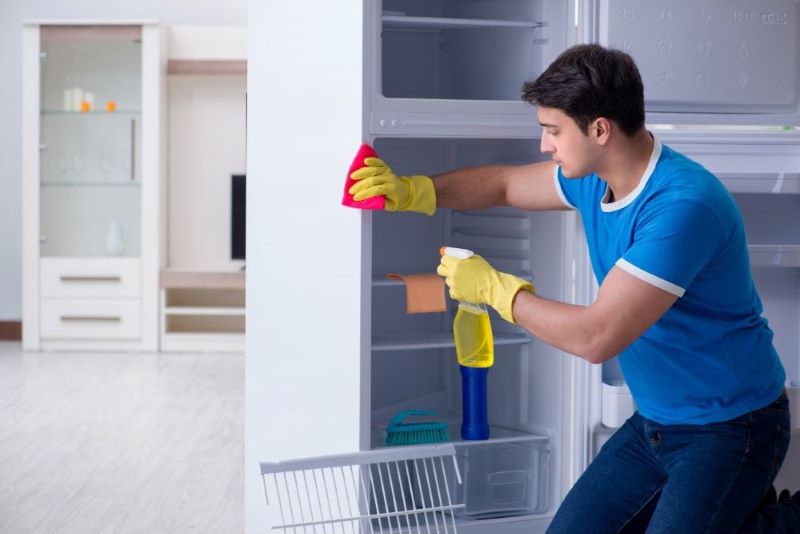
Fridge Cleaning: Preparation Steps
Embark on a journey of cleaning and maintaining your fridge with these crucial steps for success. Start by emptying its contents, then use warm water and gentle dish soap to banish grime. With your fridge emptied, it becomes a canvas for a hygienic transformation.
Choosing the right tools and safe cleaning products is essential for effective deep cleaning of your refrigerator. Experts recommend using warm, soapy water and a reliable microfiber cloth for thorough cleaning. Prioritize safety by unplugging the fridge and wearing gloves. By following these steps, you can achieve a clean and well-maintained fridge that promotes food safety and prolongs its lifespan.
Step-by-Step Cleaning Process
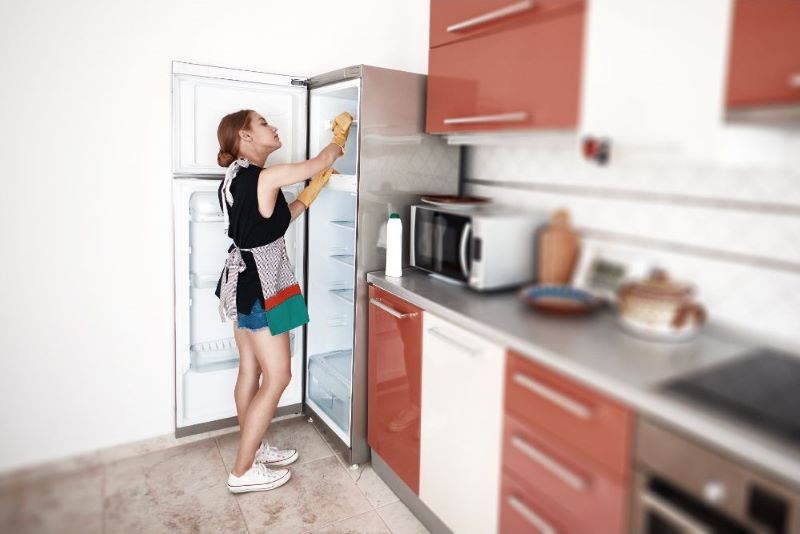
Give your fridge a facelift by cleaning the outside with a damp cloth to remove dust and dirt. Don’t forget to clean the shelf, drawer, and drip tray, and wipe the freezer to prevent frost buildup. This makeover not only enhances the appearance but also creates a clean and inviting kitchen environment. Start by emptying your fridge and washing shelves and drawers with warm, soapy water. Pay extra attention to corners and use a vinegar-water mixture for tough stains. Don’t forget to clean the walls to eliminate hidden odors and spills. Your fridge will be fresh and hygienic inside and out.
This practice helps prevent the accumulation of dust and debris, which can otherwise impede the cooling efficiency of your fridge. By taking this simple step, you not only reduce energy consumption but also extend the lifespan of your refrigerator, ensuring it remains a faithful companion for years to come.
Attention, fridge stains! We’ve got the solution for you. Don’t fret when faced with stubborn, unsightly marks. Equip yourself with effective cleaning methods. One powerful ally in this battle is baking soda paste, which effortlessly tackles even the toughest stains. For those extra stubborn marks, vinegar solution is your trusty sidekick, leaving your fridge fresh and stain-free.
As you conquer these blemishes, remember to thoroughly rinse and dry all surfaces, ensuring a clean and hygienic environment for your food and drinks. Also, opt for eco-friendly alternatives by avoiding harsh chemical products, promoting a safer and greener approach that’s kind to both you and the environment.
Maintaining optimal fridge efficiency and functionality relies on prevention. Regular checks serve as your frontline defense. Start by promptly disposing of any spoiled or expired food items. This not only prevents unpleasant odors but also protects your food from potential contamination. To tackle any lingering odors, consider placing an open box of baking soda in the fridge.
This simple yet effective trick absorbs and neutralizes unwanted smells, ensuring that your fridge remains a breath of fresh air in your kitchen. Stay vigilant, and your fridge will reward you with reliable and odor-free performance.
By following these detailed cleaning steps, you can ensure that your refrigerator remains clean, fresh, and operating at its best, providing you with a reliable and efficient cooling solution for your food storage needs.
Fridge Door Seal Maintenance: Keeping Your Fridge at its Best
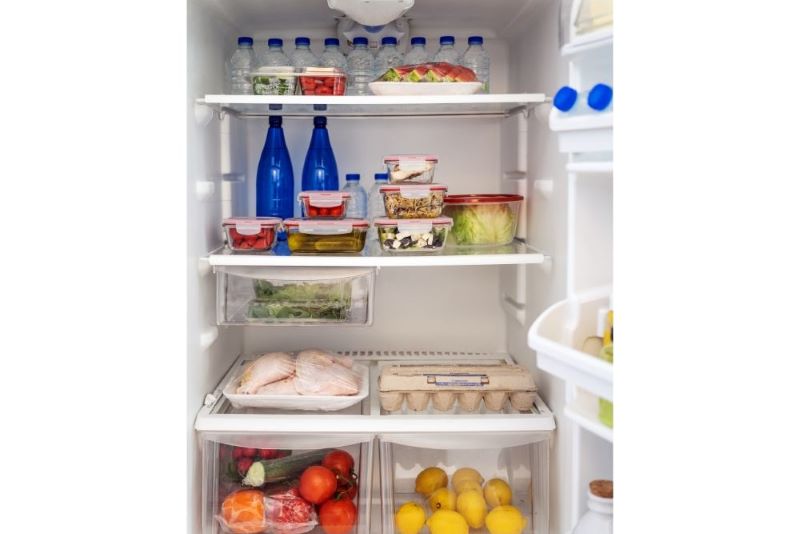
Understanding the importance of the door seal in your fridge is crucial for optimal performance. Often overlooked, the door seal is the unsung hero that keeps the cold air in and the warm air out, maintaining the right temperature.
To maintain efficiency, regularly clean the rubber seal with a gentle dish soap to ensure a secure and airtight seal, promoting energy efficiency and preventing food spoilage.
Promptly replace any damaged seals to prevent temperature fluctuations and excessive energy consumption. By following these guidelines, you can keep your refrigerator running smoothly, your food fresh, and minimize energy waste.
Unveil the origins of those unpleasant smells hiding in your fridge and gain valuable insights into the factors contributing to their formation. It’s not just about forgotten leftovers or half-empty condiment jars; there’s more to it than meets the eye.
By exploring the science of fridge odors, you’ll uncover various culprits, including expired food, improper storage practices, and the subtle growth of odor-causing bacteria. Understanding these sources empowers you to proactively combat foul smells, maintain a fresh and clean fridge, and ensure your stored food remains as delightful as it should be.
Discover the extraordinary odor-fighting abilities of a common kitchen staple – baking soda. Dive into the fascinating science behind this household hero as you learn how it utilizes its superpowers to eliminate even the toughest and most unpleasant smells in your refrigerator.
But that’s not all! You’ll also gain valuable insights into when to replace your trusty box of baking soda, ensuring your fridge remains fresh and inviting. Embrace this ingenious solution to maintain a pristine food storage environment and enjoy delightful scents every time you open the fridge door.
Discover a world of specialized packs and gels that can transform your fridge into a refreshing oasis. These innovative products not only capture but also neutralize stubborn odors that linger in the corners of your refrigerator.
Explore the fascinating science behind their effectiveness and find the perfect solution tailored to your needs. From combating lingering food smells to preserving the freshness of your produce, these products are your allies in the battle against fridge odors. Breathe in the freshness every time you reach for your groceries!
Bringing Order to Chaos: Food Placement
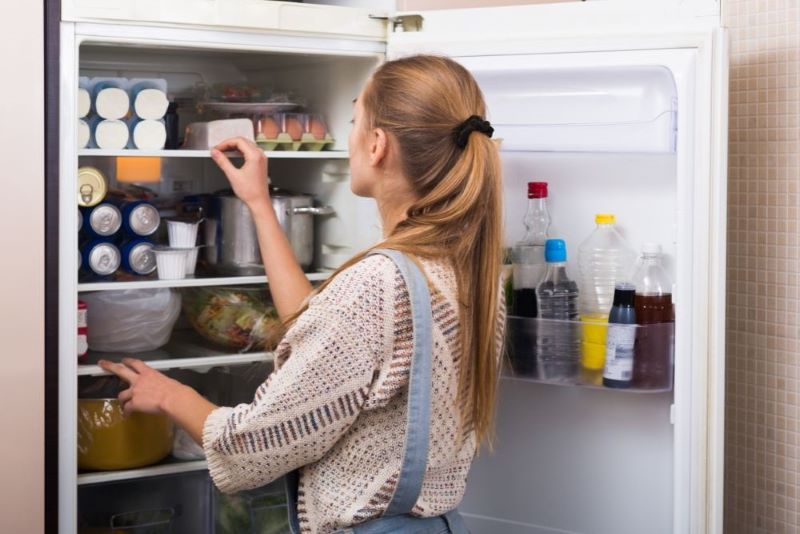
Unveil the mysteries of a systematically arranged refrigerator to ensure the freshness and safety of your food. Acquire the knowledge of optimizing storage capacity, upholding tidiness, and fostering energy efficiency within your stainless steel refrigerator.
Safeguard your culinary treasures, diminish energy consumption, and embrace these invaluable insights to maintain a sparkling fridge. Don’t forget the importance of a deep clean, a rubber gasket, well-maintained refrigerator interior, and the role of ice packs, a clean tower, and a trusty paper towel in your pursuit of fridge perfection.
Establishing a Monthly Ritual: Achieving Fridge Bliss
Give your refrigerator the attention it deserves. Make it a monthly ritual to maintain and care for your fridge in order to achieve optimal performance. Remember, establishing a regular maintenance schedule is crucial for long-term fridge bliss.
Learn how dedicating a specific time each month for maintenance can help prevent issues and keep your fridge running smoothly.
Setting aside some time each month for fridge maintenance may appear insignificant, but it’s a significant step towards a hassle-free and efficient kitchen. Discover how this monthly ritual can prevent problems and keep your fridge running smoothly.
Tackling Spills and Stains: A Monthly Cleaning Routine
When it comes to culinary adventures, spills and stains are bound to happen. Even your fridge isn’t immune. Take time each month to tackle those pesky spills and stubborn stains in your cleaning routine.
Discover effective cleaning techniques and products to remove tough stains and maintain a hygienic fridge environment.
Don’t be discouraged by stubborn stains! Armed with the proper methods and cleaning products, you can effortlessly eliminate them and establish a fresh and sanitary fridge atmosphere. Dive into the secrets of addressing persistent stains today with the aid of techniques for routine cleaning, hot water, a soft cloth, and the management of excess moisture within your clean refrigerator.
Identifying Fridge Problems: Staying Vigilant
Much like ships depend on vigilant sailors, your fridge too calls for careful monitoring. Learn how to discern indications of problems, like temperature fluctuations and unusual sounds, with the assistance of crucial practices such as checking expiration dates, consulting the owner’s manual, temporarily unplugging, inspecting the cooler, and assessing the integrity of door seals.
Understand common issues that may arise in your fridge, such as malfunctioning components or unexpected noises.
Refrigerators, like any other machines, can occasionally experience issues. It is important to be aware of common problems that may occur, such as temperature fluctuations or malfunctioning components. Stay proactive by identifying and addressing these issues early on.
Essential Tools and Supplies
Discover the essential tools and supplies necessary for effectively maintaining your refrigerator. Dive into the indispensable items that simplify your cleaning routine and ensure thorough maintenance.
In the realm of fridge upkeep, these tools are a must for any skilled individual – a damp microfiber cloth, a vacuum cleaner, white vinegar, and the means to care for the fridge interior.
Unleashing Insights: The User Manual
Discover the hidden treasure trove of insights waiting for you in your fridge’s user manual. Unlock troubleshooting tips, understand special features, and optimize performance. With this guide, become a fridge organization and maintenance maestro. A well-kept refrigerator keeps your food fresh and your kitchen efficient. Embark on this journey to fridge mastery and enjoy a kitchen that runs smoothly.
Tags: cleaning fridge, how to clean fridge, steps in cleaning fridge

